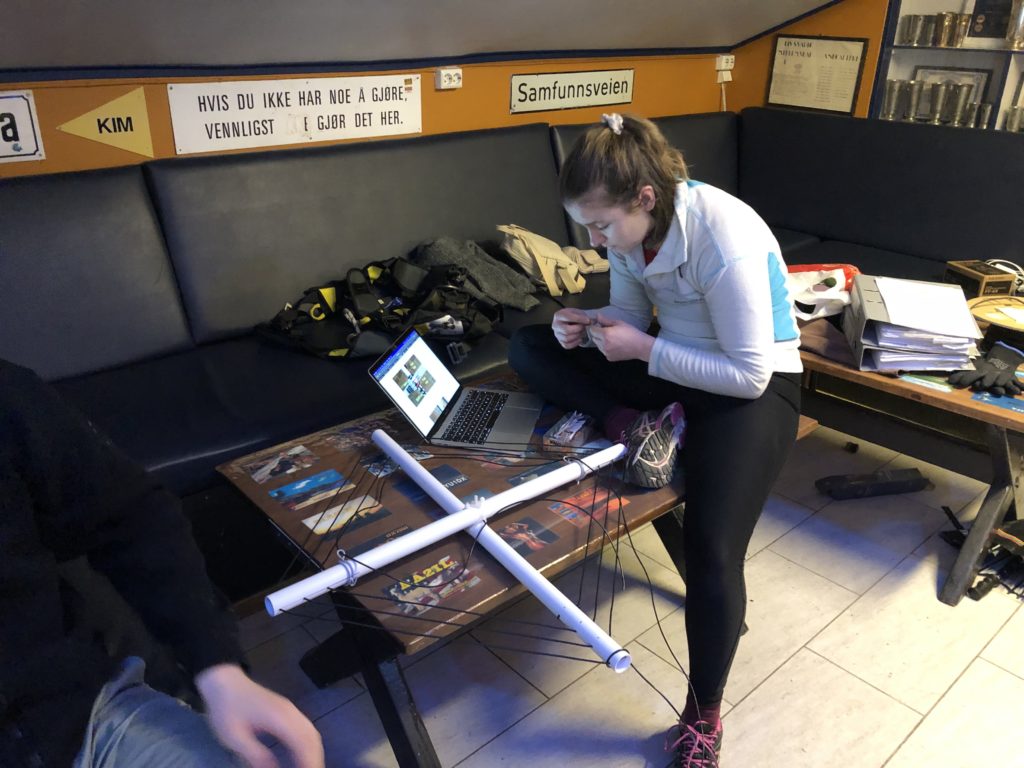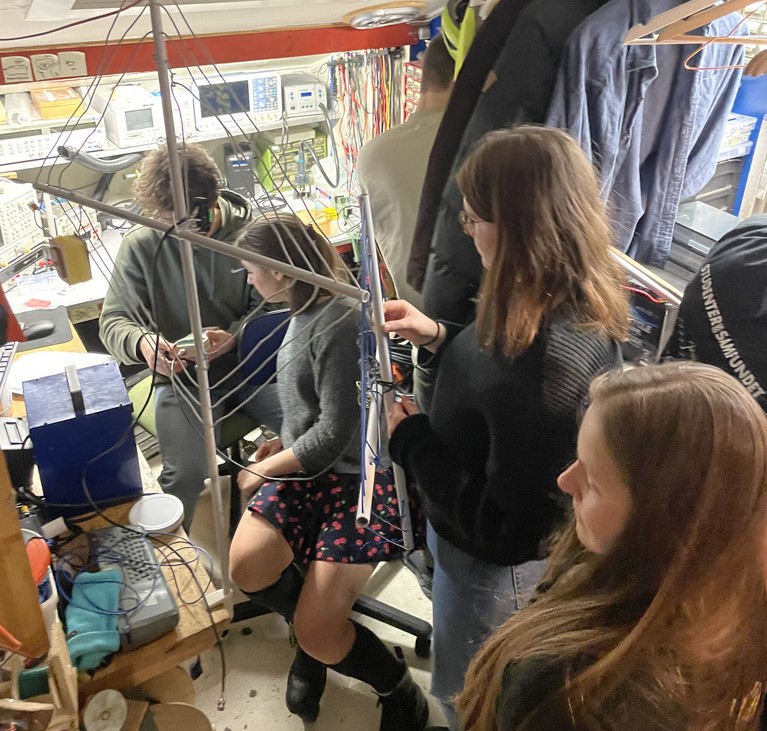During the fall of 2021, the digital mode SSTV had a small revival at LA1K. Beginning with a few members on the 20-meter band (and once on LA2T’s 2m repeater), interest gradually grew and more people started participating on the mode.


Photo: LB9WI
Due to this interest, LB9WI and LB5PI started a project in January to build a 20-meter loop antenna using SM0VPO’s design. In combination with an SDR, the plan was to use it as a cheap way to receive SSTV memes at home without needing an HF radio or a big and expensive HF antenna.

Photo: LB5PI

Photo: LB5PI
The SSTV mode is very beginner-friendly, with the visual feedback being more dominant than the auditory. And as many new OP’s are shy to speak on the air, we thought this project would be a good way to engage this year’s new recruits.
SM0VPO’s loop antenna design is both cheap and simple and we were able to acquire most of the required material at the local hardware store. Plastic tubes, some cables, a ferrite ring, some terminal blocks and a connector was all we really needed. We bought enough material to make three antennas.

From left: Harald, LB9WI, Ingvild W., Ingvild O.
Photo: LB0VG
The work took place during our weekly “ARK Mondays” at our QTH. The first Monday, the 14th of February, enough newcomers showed up to divide them into two groups and they got to work. To make the project a bit easier, LB9WI had made a step-by-step instruction manual, since SM0VPO’s description is a bit vague and not ideal for beginners. At the end of the night, one of the groups had come quite far and we assumed we would start on the testing next week.

Photo: LB5DH
The next week, a few more newcomers showed up and were put to work making the third antenna. As for the first group, we discovered that due to a typo in the instructions, their loop antenna only had two turns, instead of the required three to be resonant on the 20-meter band. For fun, we measured the antenna as-is and found that it was resonant a few MHz above the 20-meter band.

From left: Patrick, Oddbjørn, Stefan
Photo: LB5DH
After adding the third turn, and getting help from LB0VG to terminate the coaxial cable with a BNC connector, the antenna was finally ready for tuning! Following SM0VPO’s design, the antenna has a gimmick capacitor created by twinning the ends of the larger loop together. So to tune the antenna, we used our analyzer to measure the SWR dip and then adjusted the turns on the gimmick capacitor to move the dip up or down.

From left: Ingvild W., Ingvild O., Harald, LB9WI
Photo: LB5DH
After teaching the newcomers how to use the analyzer, we sent them out into the hall to tune on their own. When they came back, they had a tuned 20-meter loop antenna, a dip at 14.230 MHz with an SWR of 1.2!

From left: LA2QUA, LB9WI, Oddbjørn, Morten
Photo: LB5DH
To test, they decided to go outside to the park outside the Student Society and were joined by LB0VG and LB1DJ. For equipment, they brought our FT-891 portable radio, an ATU, and portable batteries. When they were ready, LB9WI sent a cute picture of her cat from the shack, which they received unsurprisingly. For the final test, they had to transmit their own SSTV images from the new antenna – success!

From left: LB1DJ, Harald, Ingvild
Photo: LB0VG, LB9WI
Even though this project was intended for a very specific use-case, the antenna can be used for any mode on the 20-meter band. It was a great way to give our newcomers hands-on experience with amateur radio working on a project that was not above their knowledge level. Thank you to all the newcomers who participated in this project! Harald, Ingvild O., Ingvild W., Kasper, Morten, Patrick, Randi, Stefan. And thank you to all the experienced helpers, LB0VG, LB1DJ, LB1HH, LB5DH, LB5PI, LB6GH, LB9WI and Aleksander.


Could I get a link to the instruction manual? I assume the typo you mention has been corrected.
Hi Alan! The instruction manual was written in Norwegian, but I’d be happy to translate it into English and send it over if you give me your email.
It’s just based on the design presented here (http://85.226.187.247/antennas/20m_ant_00.htm) so you might have enough information already.